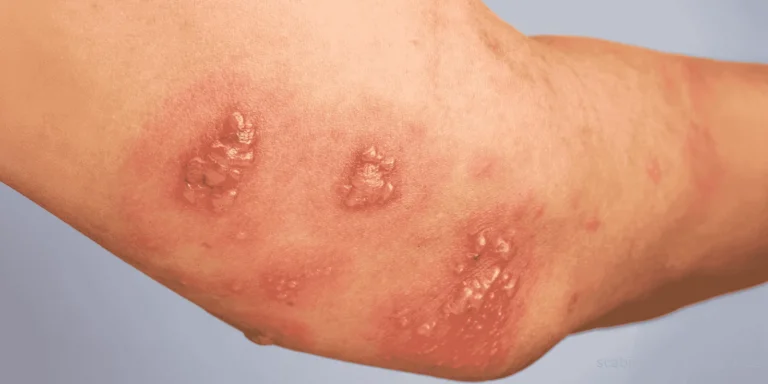Both scabies and bed bug bites cause itchy skin, but they’re completely different problems requiring different treatments. Knowing which one you’re dealing with matters because treating the wrong condition wastes time and money while you continue suffering.
Let me help you tell them apart.
Location of the Itch
Bed bug bites typically show up on exposed skin—arms, legs, neck, face. Anywhere that’s uncovered while you sleep. You’ll often see them in a line or cluster where the bug walked across your skin feeding multiple times.
Scabies prefers warm, thin-skinned areas—between fingers, wrists, elbows, armpits, waistline, and groin. In adults, you rarely see scabies above the neck. In babies and young children, it can appear on the head, face, and soles of feet.
If your itching is concentrated between your fingers or around your waistline, think scabies rather than bed bugs.
What the Bites Look Like
Bed bug bites appear as small red welts, similar to mosquito bites. They’re raised, itchy bumps that might have a darker red spot in the center. The pattern is often a distinctive line or zigzag.
Scabies creates a different picture. You’ll see tiny raised bumps, sometimes in a line where the mite has burrowed under your skin. The burrows themselves look like thin, irregular gray or skin-colored lines—these are the tunnels the mites create.
Scabies also causes a more widespread rash in the areas where mites are active. It’s not just isolated bumps like bed bug bites.
When Itching Happens
This is a big clue. Bed bug bites can itch anytime but don’t follow a particular pattern related to time of day.
Scabies itching gets dramatically worse at night. People describe being unable to sleep because the itching is so intense after they get in bed. This nighttime worsening is classic for scabies.
How It Spreads
Bed bugs don’t live on your body—they live in your mattress, furniture, or walls and come out to feed. Finding evidence of bugs in your bedding or seeing actual bugs confirms bed bugs.
Scabies mites burrow into your skin and stay there. They spread through prolonged skin-to-skin contact with an infected person. You can’t see scabies mites without magnification.
I had a family last year where everyone started itching. They assumed bed bugs and threw out their mattress. Turned out to be scabies, which required prescription medication for everyone in the household.
Who Else Is Affected
If everyone in your household is itching, especially in those characteristic scabies locations, it’s probably scabies. It spreads easily among family members.
Bed bug bites are more random. One person might get bitten frequently while their partner in the same bed barely gets touched. Bed bugs have feeding preferences.
Treatment Differs Completely
Bed bug bites don’t need medical treatment—just anti-itch cream and eliminating the bugs from your home through pest control.
Scabies requires prescription medication. Through our telemedicine system, I can assess your symptoms and prescribe appropriate treatment if scabies is confirmed. Everyone in close contact needs treatment simultaneously, even if they’re not itching yet.
The bottom line? Location of itching, nighttime worsening, and pattern of bumps help distinguish these conditions. When in doubt, medical evaluation prevents weeks of ineffective treatment.











